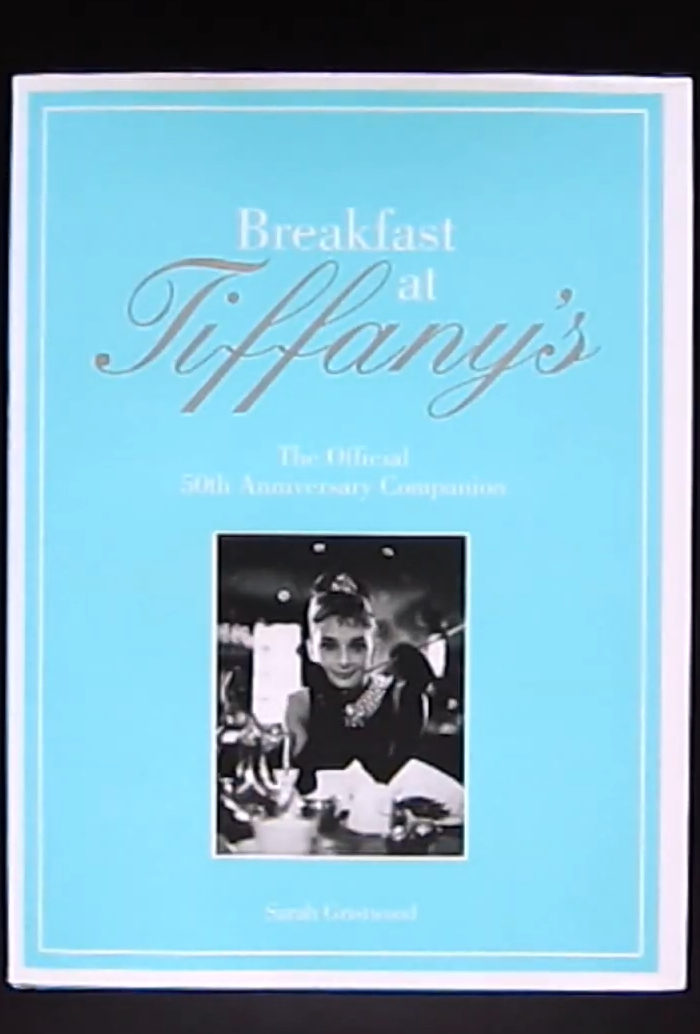Truman Capote’s Breakfast at Tiffany’s
I’m pretty sure that most people when they think of Breakfast at Tiffany’s automatically think of Audrey Hepburn, who played Holly Golightly in the movie of the same name, and who also graces the various covers of this work. A short hairstyle gathered up, tinted glasses, and a slight smile at the corner of her mouth is exactly how Holly looks at us from the covers and posters for the film. Like it or not, this is the image that haunts you as you read, and even if you wanted to create your own image of Holly Golightly, I’m sure most of the time it wouldn’t be much different from what you’ve already seen.
I sometimes wonder, though, what is the appeal of books like Breakfast and Tiffany’s? Books without much plot, with no active incidents or events, built on teary conversations, sometimes clichéd, like what we’ve seen before in Fitzgerald, perhaps in Jerome Salinger. In my opinion, the answer is very simple–it is their charm. The novel Breakfast and Tiffany’s, like the books by the above-mentioned writers, has its own special and unique charm, its atmosphere absorbs the reader; such books have the amazing property of creating a 3D reality, they allow you to travel through time. Like a tourist who wanders through different parts of the world, reading this book I can say that I was in New York in the 50s and out of the corner of my eye I glimpsed Brazil of that time! Similar feelings arise when reading Hemingway’s And the Sun Rises: it seems as if you are going with his characters to Spain, watching bullfighting, fishing in a mountain river…
Frankly, Truman Capote didn’t create anything brilliant! He took a rather average plot component, spiced it up with quite typical clichéd turns and decided not to burden his work with deep moral and philosophical reflections. However, the most striking thing in his book is the image of a young girl, Holly! Such books are definitely priced not by their morals and plot, but by their images.
Who is she, Holly Golightly? An adventuress, a rogue, a showgirl, a frivolous person? Everyone probably can characterize her in a special way, without repetition, and certainly one epithet is not enough. I would call her a nostalgic woman! In our lives, we often meet people who appear at a certain stage, and then suddenly disappear without a trace, and the only thing that remains of them is the memory. Of course, this person can send a bright postcard from Brazil and write a few words, but the feeling that this person is gone from your life forever, never leaves. All that’s left is nostalgia. That’s what Fred (the narrator in the book) does – he’s nostalgic about his fleeting acquaintance with an unusual girl and that fleeting segment of his life spent next to her.
One also gets the feeling that Truman Capote has spiced up his book with details from his own life. The image he created of 19-year-old Holly was not taken out of thin air; how many such cuties has he seen in his life?! Besides, Truman’s mother was married to a man who had served 14 months in Sing Sing prison, exactly like the gangster Sally Tomato, whom Holly visited weekly. There is also no doubt that Capote, though he did not draw, was clearly inspired by the image of Marilyn Monroe, the basis of which he adopted for his novel. After all, it was her writer saw the image of Holly in a future film adaptation, and therefore was very disappointed to learn that this role approved the other actress.
The content of the book “Breakfast and Tiffany’s”
As I noted earlier, the story is narrated on behalf of Fred, a young aspiring writer who meets an attractive girl, Holly. She rents an apartment in the same house as Fred in New York City during World War II. He meets her for the first time under unusual circumstances; later, parties are often held in her apartment, whose guests are mostly middle-aged men of all sorts. Such a way of life naturally cannot help but attract oblique glances from the outside.
As Fred becomes a close friend of Holly’s, he discovers another side to this girl’s personality. She is on the one hand a mediocre person, dining with Hollywood directors, the rich and other prominent figures, and, of course, dreaming of a lucrative party for herself. In the whirlwind of such fickleness, her only solace is the establishment at Tiffany’s, which to her looks like the real fulfillment of all her aspirations. But on the other hand, she lives in a separate world in which her self-created self is so detached from dull reality that even Holly herself is hardly able to distinguish between her own posturing and casual behavior. She says this could go on forever, but there are a few moments in the book when she does bare her soul and her true self, not made up or pompous. The most striking example, perhaps, is the case of the ejection of


